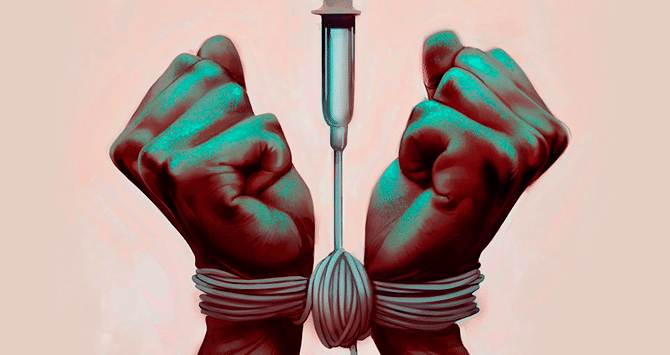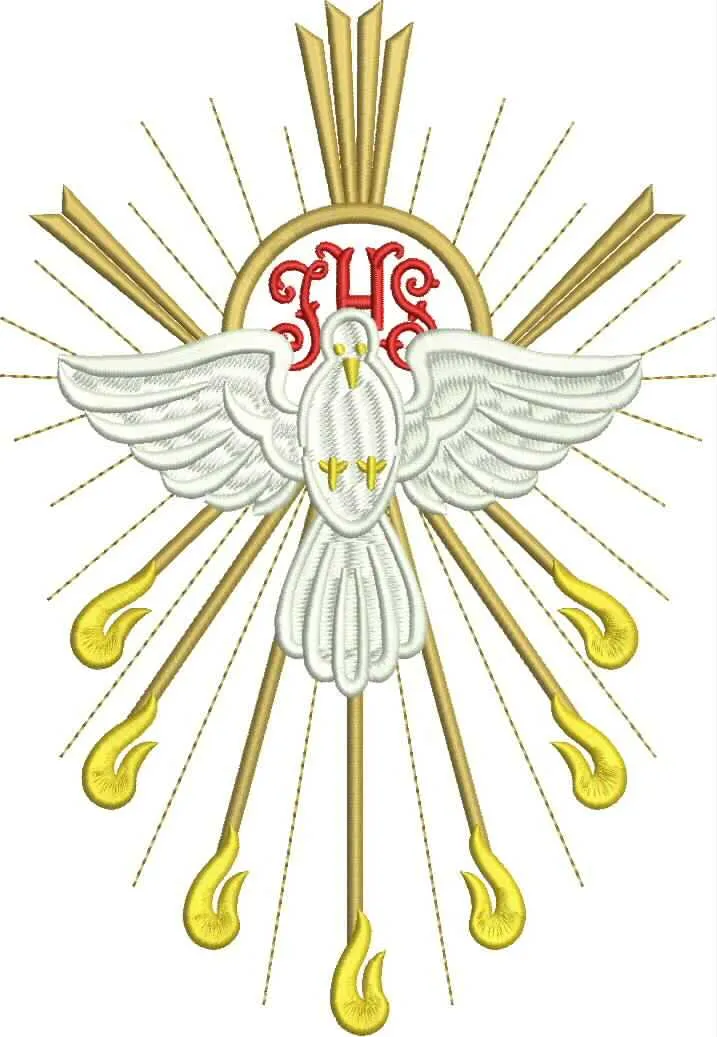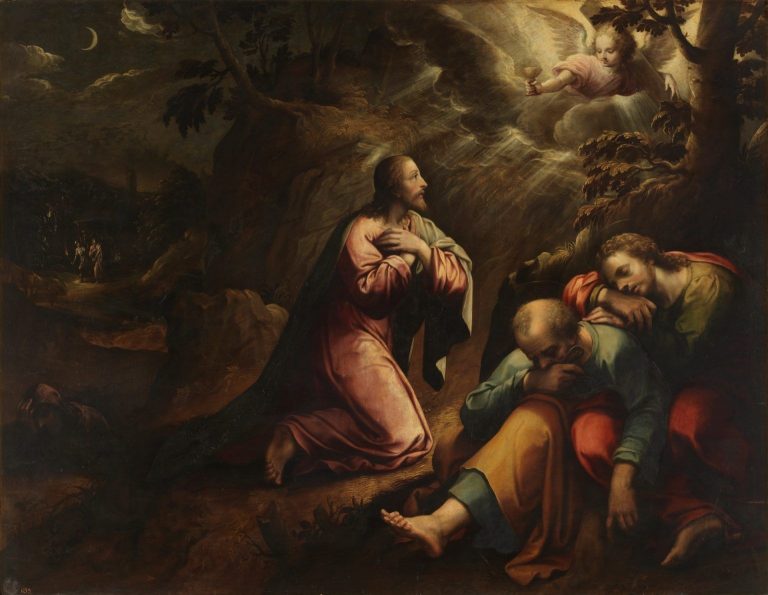Prohibition of Euthanasia Arguments Against in the Bible
There are prohibitions regarding situations that arise in people’s lives, and it is often related to the life of each one, such as delicate diseases, we refer to the prohibition of euthanasia , it is questioned by the Bible.
Ban on Euthanasia
In relation to the issue of the prohibition of euthanasia, we want to say, as is known, it is a somewhat difficult decision to make at the time of the life of the sick person. Euthanasia was recently legalized in the Netherlands and this generated the need for some political parties to legalize it in the same way in Spain.
According to the document issued, the Catalan Association of Bioethical Studies (ACEB) seeks to contribute to the discussions and main thoughts, solutions to a situation as delicate as the elimination of the penalty for actions against people’s lives.
What is euthanasia?
It is defined as the action of the doctor that deliberately results in the death of the patient; as defined by the World Health Organization (WHO). Regarding this definition, the intentionality of the act of the treating physician is denoted, or rather, the voluntary provocation of the death of the other.
This process of euthanasia can be carried out by direct or indirect action on the patient, namely:
Directly: when a lethal injection is placed on the patient.
Indirectly: when the necessary and basic treatment is not provided for the patient to survive. In these two cases the idea or objective is the same: the end of the life of the sick patient.
However, such an attitude towards any patient that is carried out with the idea of ending his life is and will continue to be called homicide. On the knowledge and information of the patient himself about his illness, as well as the free and voluntary demand to end his life, this is called assisted suicide.
This does not change in any way that it is considered a homicide, since the intention and what is proposed becomes a real conflict in relation to what is currently governed by Law and Medicine.
Debate actual
As we said before, euthanasia is an act that has the intention of causing the death of a sick person, bringing serious results for family members, social, medical, ethical and political life.
The idea of the lack of penalization will bring as a direct consequence the modification within its own essence, in terms of the relationship between generations and the medical personnel that integrate it. In the Netherlands, an amount of 1,000 deaths from this practice is observed, according to the Remmelink Report, involuntarily or without the consent of relatives since 1990.
This number of euthanized patients becomes many reasons to oppose the process of active euthanasia. Likewise, regarding the cases in which euthanasia is requested by the patient himself, an ethical problem can be seen since it is a question of social and professional slavery in relation to the problem of illness and death.
In relation to extreme cases and personal autonomy, they are often referred to by those who practice this type of process as euthanasia in relation to the loss of the penalty. This should not create any laws more unfair than confrontation and the individual and inevitable need of the State to protect the physical life of all people. Human suffering must be eliminated, but not the human who is suffering.
There are three aspects that are usually complicated and are present in the debate on the euthanasia process, these are: democratic consensus, dignity of the person and personal autonomy.
consensus
This happens to the legal principle in the sole source of good and truth, leaves the lives of people at risk of the number of votes obtained in a parliament. The rules governing abortion, cloning of humans, fertilization outside the body and embryonic practice are part of the application on the principle of most of them.
Human rights are not usually granted by the number of votes obtained, nor by society, nor political parties, however, they must always be recognized and defended. Nor are they based on a social consensus, because the rights are specific to each subject. Parliamentary votes do not cause modification to the real of the human being, nor the treatment that corresponds to him.
The dignity of human life
The fact of the birth and death of people are not just facts, dressed naturally and of all relevance that is necessary. For this reason, it cannot be classified as worthy or unworthy according to the situations in which they occur, for the reason that human beings at all times and situations are totally worthy, whether they are being born, dying or living. If we maintain the opposite, it is that we go directly and contrary to what is unique and what unites as a society.
Thinking about the legalization of the euthanasia process would be an opinion of social, political and even medical defeat, in the presence of the patient himself who will not end with the particularities of life and death, nor with doubts about the conscience of the patients. doctors, patients and even their families.
personal autonomy
The right to death is not constitutionally established; the Constitution does not establish the option of one’s own life as such. If such a right existed over life, there would also be others such as the option to sell organs or the voluntary acceptance of slavery.
We can say that personal autonomy is not considered absolute. Freedom may be needed for the same person, since there is no human being without the other. The personal freedom of each individual is related to the responsibility of those around us and equally to the whole of humanity.
Democratic coexistence leads us to the obligation to enter the acceptance of taxes, laws and regimes that are never questioned as limitations on personal freedom.
How do we want to die?
Most people want a peaceful and good death, without our agony being eternal, or being affected by disproportionate technology or means of disease.
Likewise, we all seek an effective treatment for pain, and that we have the proper help and not be left adrift by the medical staff and the health team when it comes to an incurable disease.
We all need and have the right to be adequately informed regarding the disease, diagnosis and subsequent treatment that medicine encompasses, to be given the due explanation of the data in an understandable way, and also our participation in decisions about what will be done in our case. Likewise, we are all interested in receiving adequate treatment of respect, and that in the place where we are we can share with our family and friends, without restrictions of any kind except those necessary for there to be a good evolution of the pathology and the proper functioning of the center. doctor or hospital.
Regarding this answer, most people will say: no pain. People can refuse treatments that cause their life to be lengthened in an artificial way or by means of life-prolonging equipment. We want to be informed about the condition and treatment possibilities with explanations that we can easily understand.
And if it were the case that we have the option of deciding what will be practiced on us, and also reject the options that make life lengthen artificially and we have to suffer an unpleasant agony. Likewise, patients need the respectful and affectionate treatment of medical professionals, health. We need to be in the company of our family and friends.
Physician role
The medical act is based on a relationship of trust in which the patient fully trusts his doctor and his health care, all of which becomes paramount in his life. In the doctor-patient relationship there can be no mediation in the pact of intentional death. The euthanasia process means the end of the trust that is placed in the professionals who take an oath at the time not to intentionally cause the death of the patient under any circumstances.
This process of euthanasia will cause dehumanization in medicine. Only through total respect will it be possible to conclude that people’s lives are usually worthy, that none of them is indispensable or not worth living.
Likewise, euthanasia will stop the advance of medicine. This makes doctors indifferent to different types of diseases, there will be no reason to investigate the pathogenic mechanisms of senility, gradual loss of the brain, cancer when it is in the final stage, morphological or biochemical malformations, among others. .
The solution to this goes through the comprehensive care of the person or patient who will die, treating their physical as well as psychic, spiritual and even social ailments.
Palliative Medicine is based on this, which goes from the point of view of the total respect that should be given to any person in the face of the therapeutic limitations that medicine itself entails, as well as going on to control the symptoms of the disease, mainly pain, and the accompaniment of the patient until the moment of his departure.
What is terminal sedation?
In relation to this we can understand the deliberate application of drugs or medications in order to produce a deep and irreversible minority of the consciousness of the person whose death is approaching, all with the aim of alleviating the suffering. physical or psychological that could not be achieved by other measures and through the explicit, total or delegated consent of the patient.
When this type of implicit or delegated consent is used, from the moment the patient is aware of the information, it eliminates his right to face the final act of his own life: his death. The relatives and the treating physician supplant and remove the option from the patient of full knowledge of the decision made.
With real respect for the rights that the patient has, he makes him a participant in the decisions about his own care, even if they go through unpleasant information.
Regarding terminal sedation, it can be said that it will be ethically correct, when:
- Its purpose is to reduce suffering.
- When seeking only to lessen suffering but not the intentional need for death.
- When there is no treatment that is considered alternative or that achieves the basic effects without secondary consequences, which is the shortening of the patient’s life. Regarding this, the action is considered correct and ethically permitted.
- Terminal sedation is considered correctly only when the goal is to reduce the patient’s suffering, but not when the goal is to hasten death. In such a case it is an active euthanasia.
Consequences of the lack of criminalization in euthanasia
Some diseases cause illnesses or bring with them unpleasant family experiences, they can be the cause of a personal decision in favor of the euthanasia process. However, in extreme cases, neither social nor fair laws are generated, due to these same causes and situations.
Such cases are used and shown as unsolvable, so that if it is currently accepted to intentionally kill a patient in order to solve a problem, later on a number of problems may be found for which the solution is to kill.
The process of euthanasia will not solve the patient’s problem, unlike it will destroy the person who presents the problems.
Euthanasia: right or crime?
The dilemma of euthanasia: is it positive or negative? What is it? Is it a unitary idea or are there several types of euthanasia?
There are five words that reveal the above in terms of the types of euthanasia and the reflection on Family and Truth is made of the same, trying to understand if it is necessary to be in a favorable position or against:
Life
Death
Men
Freedom
Happiness
As for the initial classification that biology makes regarding this situation, it is centered on the position of whether it is organic or inorganic. And what separates one from the other is life itself.
That is why everything that man is can be summed up in a single word: life. It is the cause-effect of the individual and of human actions. Its origin presents discussion about it, however it is not desired to focus its analysis on this peculiarity.
In the same way we must understand that just as the human being is life, he is also death. Since ancient times, already in Rome they applied the alert of the moment mori. Today this ideology is alive through popular phrases such as “I’m only sure of one thing, that I’m going to die.”
Even when life deals with movement, fulfillment and activity: the opposite of it is death, the final design, rest, silence, etc. Both life (βίος) and death itself (Θάνατος) are born according to the finite and constant nature of human beings. No one has the power to live. However, to die it seems so.
You cannot be in favor of death because of the different types of euthanasia.
Here we will analyze the trending topic of euthanasia that creates more opinions every day in Spain. The index that we are going to indicate regarding the previous point will be:
- medical action.
Group of doctors: medicine cannot be used to go against people or patient with euthanasia.
- Made to a serious or incurable patient.
Terminally ill man. He cannot be in favor of the application of the types of euthanasia in any way.
- It is deliberate.
- Ends the patient’s life.
Tomb: when it is applied in any case and type of euthanasia, the result will end up here, therefore it is contrary to all sense of application.
types of euthanasia
These can be divided into several criteria, all according to the terms of the University of Barcelona, among the most common we have:
- From the type of reasons you have to execute such a practice:
-〉 Pious: in this case, what euthanasia seeks is to eliminate the suffering of the terminally ill patient. As an example of this we have the process of disconnection of the seriously ill when he is in a vegetative state.
-〉 Eugenics: seeks the betterment of humanity. This practice was very common in classical Sparta. From the moment of the birth of a child, either with a defect or anomaly, example trisomy of the pair 21; they threw him into the void from the top of Mount Taygetus.
Euthanasia on Mount Taygetos
-〉 Economic: it is the process that tries to end people’s lives since they are seen as useless or worthless and maintaining them creates an unnecessary economic expense. It is very similar to the eugenic type, however it was practiced mostly in modern countries in times of crisis, such as Soviet Russia.
In other times it was maintained that what was in the way had to be eliminated since it causes delays and was considered totally and absolutely unproductive. All of the above was a vision that only belittled the human being and took it as only a used object, lucrative, survival and subsequent right.
As for the last two forms of motivation, there is also unanimity, in which there can be no consideration of euthanasia, but rather homicides. Currently, the process of throwing a baby down a hill or shooting a traitor who is against the regime are attached to universal criminal law, since they are crimes against life.
Crimes against life (execution)
- From the patient’s point of view:
-〉 Voluntary: in this case the decision to die is made by the patient himself, due to his own decision or that of his relatives, this in case the patient is not aware and his will is manifest in advance.
-〉 Not Voluntary: as the word itself says, this is in the event that the decision is made by a third person, because there is no possibility of knowing the patient’s own will. As an example, it could be the case that the decision is made by a nephew and requests the disconnection of an aunt, at times when she cannot communicate or is not aware, as in the case that she is in a coma.
In the event that the person has left a document giving prior authorization for the practice of euthanasia, this must be reviewed under the supervision of a notary.
-〉 Involuntary: in this case of euthanasia there is a third person who has the power to decide without having to request permission or consent from any family member of the patient. An example of this may be a patient who does not have relatives or people who are closely known. In this case it may be that there is a lack of familiarity and there is no express will either, in this case any person can take care of the patient and order his final death.
- Depending on who is the author of the action:
-〉 Autonomous (Suicide): in this case the same person causes death without third parties participating.
-〉 Heteronomous: here the patient’s death occurs which is caused by other people or a certain person.
- From the attitude with which it is done:
Solutiva
With this, it is about assisting in the process of death: it reduces suffering by giving it painkillers that do not speed up or slow down the time of death. This type of euthanasia seeks to reduce or eliminate the patient’s suffering, even if the outcome is death in progress.
Resolutive: passive and active
This type of euthanasia is tolerated and ordered its application of other people or another in particular that are alien or have nothing to do with the patient but affects the life process. There are also other types of euthanasia that we are going to mention, decisively:
-〉 Passive euthanasia: with this you see the omission of any desire for healing or any similar action. There is no remedy or act on the end of life, it is done through neutrality and passivity. Anything that could be summed up as “letting die.”
-〉 Active euthanasia: it is carried out through deliberate actions under order that the patient dies in any way, yes or yes.
-〉 Direct active euthanasia: in this case death is caused by deadly substances. As an example we see that pentobarbital is applied.
-〉 Indirect active euthanasia: in this case, analgesics and other medications are administered so that little by little and slowly, and equally without pain or that it is as little as possible so that the patient dies. As an example in this case it is the one used according to its cleanliness and low price, it is the morphine patch, which is adhered to the back, and after hours it causes death.
News of euthanasia in Spain
It is important to clarify to the reader that euthanasia has always existed. Its practice has been in many ways, however its beginning and ending are based on the same pattern. Likewise, it must be clarified that any person will not seek to be killed for the sake of it.
The most abundant cases of euthanasia, which are eighty-five percent; they become terminal patients, people without a cure, suffering from depression, who do not have emotional or material resources. It must be taken into account that the mere fact of being in bed without being able to do normal activities or be able to fend for oneself is exasperating for anyone.
This happened to Ramón Sampedro. It is about a writer, a sailor who had been suffering from quadriplegia since he was 25 years old. He himself once requested one of the types of euthanasia (assisted suicide) several times. At all times he fought so that the people who were immersed in such a process were free of judicial burden.
He became the first person in Spain to request the euthanasia process. Her case had a lot of repercussions, so much so that they took her story to the big screen directed by Alejandro Amenábar called “Sea Inside”.
The case of María José Carrasco has been one of the last. This was reopened regarding the opinions that derive from euthanasia, as to whether it is considered legal or not. This turned out to be a trigger for the leftist and liberal parties, before the demand for the “right to a good death.” María José, who was ill with multiple sclerosis, had been trying to apply assisted suicide or euthanasia for years.
Her husband helped her because her desire for euthanasia was not admitted, and as a result the husband was imprisoned. Later, she achieved her freedom despite having violated the current criminal code.
Likewise, regarding this case of María José, which was so controversial, the youtuber Inocente Duke made a reflection with an important message that is not very well known:
All types of euthanasia do not present the same ethical assessment: for a large number of people who participate in the debate about euthanasia, only the aforementioned direct active euthanasia can be thought of as such, as opposed to euthanasia such as passive or indirect active, are considered correct medical practice.
Euthanasia: Against or in favor?
Regarding this issue, the first thing is to get a person to take a position for or against a certain situation, in the case at hand it is euthanasia, as we already know; This person will take into account the pros and cons and in this way will take the most appropriate position.
Advantages that go in favor of euthanasia
Avoid suffering to the patient and his companion.
It is beneficial for doctors in terms of the economic part, due to the application of fees.
It grants absolute freedom to the patient’s companion, who takes charge of the patient.
It allows the saving of money to the state since the patient will no longer consume resources and attention in hospitals and health personnel.
Disadvantages
It is considered a crime that is penalized with jail.
Human beings who in some cases do not have the capacity to ask for life or death are eliminated.
It causes a total discomfort of a psychological type of guilt in most of the people who give the authorization for euthanasia. According to a 2010 survey, in the United States, seventy-nine percent of those who signed the approval of euthanasia in a relative or friend, feel regret for such fact.
It leads to the rapid loss of the individual, leaving a void of longing among those close to them.
We must apply two visions to this:
- A) As for the pros, these go only for the economic benefit of the institutions and relationships with the patient. This economic factor “pulls disconnect buttons.”
- B) The contras generate strong civil penalties and also psychological and moral problems. The person who agrees to the euthanasia process is saving an enormous amount of money, however, they are going to jail, since they have participated in the process with their authorization before a defenseless person and this generates problems at a psychological level in an extended way in the weather.
What would be more complete? Regarding this point, the answer obviously must be not to go to jail, not to kill and not to suffer for a situation that is not an obligation to carry out. Another survey, this time conducted in Canada in 2015, to family members who participated in euthanasia processes for their relatives, ninety-six percent of those surveyed, felt happy for not having carried out such a process on their relative.
There are five statements that usually support humanity in terms of these delicate processes and decision-making, such as euthanasia:
- A) It is not good to kill or want one’s own person to die.
- B) It is much better to live than to die.
- C) Better to be free than to be locked up or imprisoned.
- D) Better to have the virtue of being innocent than a criminal murderer.
- E) It is always better to fight to live than to resign oneself to death or authorize it.
Right or crime? Against euthanasia, or in favor?
Among some of the possible consequences on the practice or tolerance of euthanasia, they are usually more harmful than beneficial, as we have already seen in previous points. Obviously a person cannot choose to live, life is given by God. Life is the beginning of a condition of the individual in an intrinsic way. So is death.
Regarding this, we can ask ourselves, are they not at a different level from one another with euthanasia? Natural law, universal and of all times, places the right to life as the first condition of the human.
According to psychology and motivation there is a clear attitude. Some of the causes that make death desired are associated with mental problems. As an example we can see a number of children who suffer from bullying, and the fact that they have so much pressure that they are generally silenced, they resort to the suicidal part.
Another example is the Dead Poets Club movie in which one of the protagonists, Neill Perry, shoots himself because his father does not let him practice his calling as an actor.
We must ask ourselves about a great point of rational value. A person who is not in his right mind, without mental faculties and absent of freedom and reason, without mitigating factors that cause pressure: will he be able to consciously decide on his life or his death? Will he be able to lead an orderly and autonomous life?
It is not usually important to mention the names of so many famous people who, due to certain factors, were not chosen and became only puppets of powerful people who obtained benefits by way of deception and took advantage of their weakness. A vivid example of this is the children’s story The Emperor’s Suit, since the protagonist is absent from the reality that surrounds him.
Some biographies of certain monarchs are provided with men and women who used their weaknesses to be able to attack aberrations and thus be able to obtain profits. As an example we see the rupture of King Henry VIII of England in relation to the Holy See of Rome, due to his obsession with Anne Boleyn, who was beheaded a thousand days later by her own husband, the king.
In relation to the history of civil law, it has always ignored testimonies and stories from people who do not have one hundred percent of the reality.
Criminal law, according to the union and observance of human dignity, ensures that killing is a crime. The opposite of crime is full rights, which arise as legal elements that enjoy protection and define the legal limitations of human beings on earth.
If killing is considered a crime, and euthanasia seeks to kill, in one way or another, although it is seen as the least harm to the patient or sick, we ask ourselves: could it be a right?
When a person commits a crime, they are breaking the law. Killing is considered a crime against humanity. We must then be clear that why we should continue in discussions if euthanasia is considered a crime. We must mention that such a crime is against nature because it plays with the possibility of a universal and transcendent way that there is: life and its snatching.
For some time now, it has been about changing the social vision on the subject of euthanasia; in the same way it happened with the union between homosexuals so that it would be well seen by society and end up being accepted in a normal way.
This artificial process implanted by the elites is known in political science as the “Overton window” and is made up of five points or stages that we will detail below:
First: it is about the unthinkable to the radical.
Second: as a second point, the radical is seen as the acceptable.
Third: from the acceptable to the sensible.
Fourth: from the sensible to the popular.
Fifth: from the popular to the political. And we could say a sixth point that is from the political to the legal.
Despite the strength of media and institutional support that euthanasia receives, there are also several experts who differ from this practice, as reflected in the BioEdge medical ethics portal. Some doctors and specialists in relation to ethics have jointly produced an article in the Revista de salud called
“Assisted Suicide and Euthanasia: Emerging Issues from a Global Perspective” all with the aim of raising awareness of the risk that the murder of people for a ‘right to death’ brings. The permission of voluntary euthanasia has managed to lead to involuntary euthanasia, all in the opinion of some experts on the subject.
Among some of these experts are Daniel Sulmasy of Georgetown University, who was a member of the Commission for the Study of Bioethical Issues regarding the mandate of former President Barack Obama. Another of the experts is the jurist and greatest activist against the euthanasia process: Margaret Somerville; and finally the care expert Lukas Radbruch.
Arguments for the prohibition of euthanasia
Within these arguments five points are understood that we are going to summarize so that the reader knows them as clearly as possible, all of them are opposed to the practice of euthanasia, for reasons of different types, namely:
“Slippery slopes”: in this regard, the authors, despite the precautionary measures taken in order to avoid excesses, “allowing voluntary euthanasia has led to involuntary euthanasia”. Among these cases that are the best known are in the Netherlands and Belgium.
“Lack of self-determination”: this is that the patient’s desire for death is not necessarily in this way and that the euthanasia process is really desired. “These expressions will depend on the patient’s own state of mind, these requests must have extreme attention.”
The same happens with children when it is intended to hormone them: that they say at a given moment an idea that is against their sex, this does not mean that a hormonal blockade is applied, since what happened depends on their state of mood and feelings, is not the result of an objective fact.
“Inadequate soothing care”: “As for the holistic knowledge of alternative care, they maintain, “it is a more urgent ethical obligation throughout the world”.
“Medical professionalism”. Medical professionals who participate in this type of process are usually in constant threat to the moral integrity of their profession, they support such an argument. If doctors are no longer “lifesavers” but on the contrary “lifesavers” the meaning has logically changed completely.
“Differentiation between means and ends”. The pressure that occurs due to the legalization of the euthanasia process, can confuse the problem in terms of illness and suffering with the life of the person. “We must be clear about killing pain and suffering or suffering, not the person with pain and suffering,” they determine. This is usually one of the arguments most used by advocates of alternative or palliative care.
Conclusions against euthanasia
According to the opinion of Gilbert Keith Chesterton, who argued more than a century ago that: “If something is really worth doing, it is worth doing it at all costs”. Life is and will always be better than death, thinking otherwise goes against human identity itself, which, as we said, is life.
We must responsibly say that the types of euthanasia are not all the same, however the desire to let die is a psychopathological symptom. Currently listening and seeing news of the suicides that have occurred in Greenland, as well as historical genocides such as the bombs in Nagasaki and Hiroshima or natural catastrophes, such as Hurricane Irma; they create very unmotivating feelings.
Death has never been and will never be something that anyone likes, and despite this there is a subject that follows logic and collides with the mind: The “good death” or euthanasia. The Family and Truth Survey determines the way in which, in spite of everything, the world currently sees the option of death rather than life itself.
Final conclusion
Regarding this subject, we hope that the reader has acquired the widest knowledge on this subject, which is considered delicate, since the induction of death is not something that can be taken lightly, but on the contrary, it is a decision that must be made. be done analyzing very well all the arguments that it entails.
even the opinion and decision of the relatives must be taken into account even if the patient has a terminal or serious illness. Life is something sacred since it comes from God and if we go to the religious he is the only one who has the power to grant it and take it away, not human beings. For this reason, this becomes a very delicate issue since it can even be penalized by the law itself.

Hello! Let me enthusiastically introduce myself as a dedicated blogger fueled by an intense passion for meticulously crafting insightful and well-researched blogs. My mission revolves around providing you, dear readers, with a veritable treasure trove of invaluable information.







